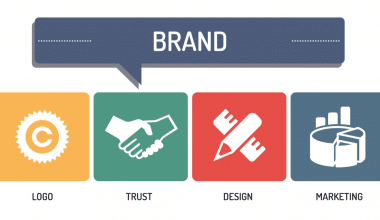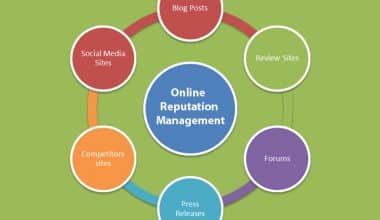Have you ever wondered why some stores attract regular customers even when they fail to offer discounts or sell expensive products? The answer is: because of brand loyalty. To understand how brands earn loyalty, I’ll need to take you through some brand loyalty examples to find out what works for those brands.
Brand loyalty is about customers choosing to buy from one store over competitors because they have a relationship with that brand. In other words, these customers are brand loyalty. But what is brand loyalty, and how do you build it? Well, I’ll answer these questions and more. I will also discuss the world’s best brand loyalty examples and what you can learn from them.
Key Takeaways
- Brand loyalty is rooted in a deep emotional connection and trust between customers and the brand. Successful brands like Apple and Nike cultivate this connection by delivering consistent, high-quality products and creating a sense of belonging through their marketing and customer engagement strategies.
- Loyal customers are significantly more valuable than new ones. They spend 67% more and are less sensitive to price changes. Moreover, retaining existing customers is much cheaper than acquiring new ones, making brand loyalty a financially sound strategy for businesses.
- Customers need to know that they can trust your brand to deliver on its promises. This means providing high-quality products and services, as well as maintaining a consistent brand image. Apple is a great example of a company that consistently delivers high-quality products.
- Building a community around your brand can foster a sense of belonging and loyalty. This can be done through online forums, loyalty programs, or exclusive events. Harley-Davidson and LEGO are mentioned as brands that excel at creating communities around their products.
What is Brand Loyalty?
Brand loyalty is the holy grail of customer relationships. It’s the measure of how devoted customers are to a brand, consistently choosing it over competitors and advocating for it to others. Loyalty stems from a deep emotional connection, trust, and satisfaction with a brand’s products or services.
Why Brand Loyalty?
Why is brand loyalty so important? Well, loyal customers are not only repeat buyers but also brand advocates. They recommend the brand to others, defend it against criticism, and are often less sensitive to price changes. According to a study by InMoment, loyal customers spend 67% more than new ones. Additionally, acquiring a new customer can be five times more expensive than retaining an existing one. This underscores the financial impact of fostering brand loyalty.
From my own experience, I can attest that brand loyalty brings a sense of reliability and satisfaction. For instance, I’ve been a dedicated Apple user for over a decade. Despite the higher price point, I stick with Apple because I trust their products’ quality and enjoy their seamless ecosystem.
Brand Loyalty Vs Customer Loyalty
Customer loyalty and brand loyalty are closely related but separate ideas. While it may seem that these terms are interchangeable, they actually represent distinct aspects of consumer behavior. So, what is the difference?
The primary distinction between these two terms is pricing.
Customer loyalty seeks to attract and retain customers by matching their needs while giving value within their budget. It entails competitive pricing, discounts, and special offers to ensure repeat business. Essentially, it uses consumers’ purchasing power and preference for firms that offer the best pricing and deals to encourage ongoing patronage.
Brand loyalty stems from an emotional connection and dedication to a brand, which is influenced by customer perceptions and experiences. Customers’ loyalty to a brand is influenced less by price and more by the company’s reputation, product quality, advertising approaches, and overall message, which causes them to continue buying from it despite cost differences because they believe it provides superior quality and service. This is seen in luxury brands like Dior, Bugatti, Rolex, and Cartier.
Types of Brand Loyalty
Customers generally form mental pictures of products after using them. Positive brand equity can create a favorable impression, causing buyers to prefer one product over competitors, even when prices are exactly the same. There are three types of brand loyalty examples:
#1. Hard-Core Brand Loyalty
Hardcore brand Loyal customers are excited about a specific brand and only associate with it positively. That suggests the consumer had an excellent experience and will remember the brand fondly.
For example, When Apple unveils a new iPhone, it shows hard-core customer loyalty. Many people identify the brand with high-quality status, thus committed customers can easily persuade others to purchase the latest iPhone.
Suppose you’re fortunate enough to have built brand loyalty like Apple. In that case, you should implement a campaign to encourage your brand ambassadors to continue spreading the word about your business and appreciate them for their support.
#2. Split Customer Brand Loyalty
Split customers are loyal to multiple brands but limit their selection to two or three. By gently encouraging these clients, you can swiftly convert them into hard-core customers. However, convincing them can be difficult because most are aware of other options.
Delta Airlines, United Airlines, and American Airlines are examples of companies with split loyalty. Customers may have the best experiences when flying with Delta Airlines, but they can also have good experiences with American Airlines and United Airlines. Therefore, the customer will have no problems flying with any of the three airlines.
#3. Shifting-Customer Brand Loyalty
Shifting loyal customers exhibit a mix of hard-core and split loyalty.
In general, such customers will purchase products from one brand for some time before switching their loyalty to another. They will then be loyal to the second brand.
One example of shifting loyal customers can be the case of yogurt. Consumers may choose to consume one particular yogurt brand over an extended time, and they will remain loyal to that yogurt taste. After they’ve gotten acclimated to it, they may try other brands.
Brand Loyalty Examples
Now, let’s delve into some examples cases of brand loyalty that demonstrate how companies can successfully cultivate and maintain a loyal customer base:
#1. Apple
Apple’s brand loyalty is legendary. Customers queue up for hours, sometimes days, to get their hands on the latest iPhone. What drives this loyalty? Apple has mastered the art of creating a premium, seamless user experience. From their sleek product designs to their intuitive software, every interaction reinforces their brand promise.
Furthermore, Apple’s ecosystem locks users into a cycle of brand usage, from iPhones to MacBooks to Apple Watches, creating a cohesive and interconnected user experience.
In my case, the decision to remain loyal to Apple wasn’t just about the products but also the customer service. On multiple occasions, Apple’s support team went above and beyond to resolve issues, reinforcing my trust in the brand.
#2. Amazon
Amazon’s Prime membership is a prime example of how to build loyalty through convenience and value. For an annual fee, members get free shipping, access to streaming services, and exclusive deals. This multifaceted value proposition keeps customers hooked. According to Consumer Intelligence Research Partners, Amazon Prime has over 147 million members in the U.S.
As an avid reader, Amazon’s Kindle Unlimited has been a game-changer for me. The ease of access to a vast library of books keeps me loyal to the Amazon ecosystem. The reliability of their service, along with quick delivery, makes Amazon my go-to for online shopping.
#3. Starbucks
Starbucks has turned buying coffee into a personalized experience. Their rewards program is a key driver of this loyalty. With every purchase, customers earn points that can be redeemed for free items. Moreover, Starbucks leverages data to personalize offers and recommendations, making customers feel valued. According to Starbucks, its loyalty program boasts over 19 million active members in the U.S. alone.
I’ve experienced this loyalty as a traveler, Starbucks has been a constant in my life. Their rewards program not only makes me feel appreciated but also gives me a reason to seek out their stores no matter where I am.
#4. Nike
Nike has built a loyal following through a combination of quality products, inspirational branding, and effective community building. Their marketing campaigns often focus on empowerment and self-achievement, resonating deeply with customers. Nike’s loyalty program, NikePlus, further enhances this connection by offering exclusive content, early access to products, and personalized training plans.
I remember my first pair of Nike running shoes; they were comfortable and durable. Since then, I’ve remained loyal to Nike not just for their product quality but also for their brand’s inspirational messaging that motivates me to stay active and healthy.
#5. Coca-Cola
Coca-Cola has successfully built a brand that evokes nostalgia and happiness. Their marketing campaigns often emphasize shared moments and happiness, which resonates emotionally with consumers. Coca-Cola’s ability to stay relevant over the decades, adapting to cultural shifts while maintaining its core brand message, has fostered unparalleled brand loyalty.
Growing up, Coca-Cola was a staple at family gatherings and celebrations. The brand’s ability to evoke those cherished memories keeps me loyal to it, and I often find myself choosing Coke over other beverages, purely out of emotional attachment.
#6. LEGO
LEGO has built multi-generational brand loyalty through its innovative and educational products. By continuously evolving and staying relevant through collaborations with popular franchises like Star Wars and Harry Potter, LEGO keeps its customer base engaged and excited. Their loyalty program, LEGO VIP, rewards members with points, early access to products, and exclusive gifts.
The creativity and learning aspects of LEGO products have kept me engaged over the years. Sharing the joy of building LEGO sets with my kids has reinforced my loyalty, as I now see the brand through their eyes as well.
#7. Harley-Davidson
Harley-Davidson has cultivated a community around its brand that goes beyond motorcycles. It’s about the lifestyle and the sense of belonging to a passionate group. Harley owners are fiercely loyal, often participating in rallies and events that celebrate the brand. This community aspect has been a powerful tool in maintaining brand loyalty.
I’ve attended several Harley-Davidson events with a friend who is a motorcycle enthusiast. The camaraderie and the shared passion for the brand create a strong sense of loyalty that’s hard to find elsewhere. Owning a Harley isn’t just about the bike; it’s about being part of a community.
What Successful Companies Do Brand Loyalty Examples Right?
Now that we’ve seen some inspiring examples, let’s dissect what makes these brands so successful in building loyalty. Here are some key takeaways:
#1. Personalized Experiences
Personalization is key to building loyalty. Companies like Starbucks and Amazon use customer data to tailor their offerings and create personalized experiences. This makes customers feel valued and understood, enhancing their loyalty.
From my experience, personalized recommendations on Amazon have introduced me to products I didn’t know I needed but now can’t live without. This tailored approach makes shopping more enjoyable and keeps me coming back.
#2. Emotional Connection
The best brands don’t just sell products, they create emotional connections. Whether it’s the feeling of nostalgia, a sense of belonging, or the desire for innovation, successful brands tap into our emotions and build a relationship with their customers.
#3. Exceptional Customer Experience
In today’s competitive market, customer experience is key. Loyal customers are created through exceptional service that goes above and beyond. Think of personalized interactions, hassle-free returns, and a genuine desire to help your customers.
#4. Quality & Consistency
At the heart of loyalty lies trust. Customers need to know that your brand delivers on its promises. Whether it’s the quality of your products, the reliability of your services, or the consistency of your brand image, meeting customer expectations builds trust and loyalty.
#5. Community Building
Building a community around the brand fosters a sense of belonging and loyalty. Harley-Davidson and LEGO excel at creating communities where customers can connect, share experiences, and celebrate their love for the brand. This community aspect strengthens loyalty.
Attending Harley-Davidson events has shown me the power of community in building brand loyalty. The shared experiences and connections with fellow enthusiasts create a bond that goes beyond the product.
Brand Loyalty Advertising Examples
Let’s look at some examples of advertising campaigns that have effectively built brand loyalty.
#1. Coca-Cola’s “Share a Coke” Campaign
Coca-Cola’s “Share a Coke” campaign personalized the brand by replacing its logo with popular names on bottles. This campaign encouraged people to buy bottles with their friends’ names, creating a personal and emotional connection with the brand. The campaign was a massive success, leading to a 2% increase in U.S. sales.
#2. Nike’s “Just Do It” Campaign
Nike’s “Just Do It” campaign is legendary for its motivational and empowering messages. This campaign has been running since 1988 and continues to resonate with customers, inspiring them to push their limits and achieve their goals. This powerful messaging has been a key driver of Nike’s brand loyalty.
#3. Apple’s “Think Different” Campaign
Apple’s “Think Different” campaign positioned the brand as a leader in innovation and creativity. Featuring iconic figures like Steve Jobs and Albert Einstein, this campaign appealed to creative and forward-thinking individuals, building a strong emotional connection with the brand.
#4. Amazon Prime’s “More than Just Free Shipping” Ads
Amazon Prime’s advertising emphasizes the value and convenience of its membership. By highlighting the benefits of free shipping, streaming services, and exclusive deals, Amazon effectively communicates the value proposition of Prime, driving loyalty and membership growth.
#5. Starbucks’ “Meet Me at Starbucks” Campaign
Starbucks’ “Meet Me at Starbucks” campaign focused on the social aspect of coffee culture. The campaign featured real stories of people connecting at Starbucks locations worldwide, highlighting the brand’s role in fostering human connections and building community.
Download Lamphill’s Template Here
How to Build Brand Loyalty
Here are some of the most frequently recognized strategies for building and maintaining brand-loyal customers that can propel your business to the next level.
#1. Best-in-Class Quality
The first and most significant qualification is the necessary condition—for brand loyalty is quality. No matter how big your marketing budget is or how many celebrity endorsements you have, low-quality products and services will always be mocked on social media.
#2. Customer Service
Exceptional customer service is costly—24/7 chat reps, social-media managers, phone operators, and support ticket staff—but ensuring that customers always receive outstanding support is an investment that creates brand loyalty and yields high returns. In a crowded market, first-class service that makes clients feel valued can be the only thing that sets a brand apart from its competitors.
#3. Brand Ambassadors
In addition to brand loyalists who contribute free word-of-mouth advertising on social media, businesses engage spokespersons to serve as brand ambassadors for their products. In addition to a solid marketing background and an established online presence with an engaged network across platforms (via blog, emails, webinars), a successful brand ambassador should have an authentic, professional presence, in-depth knowledge of products and services, and highly developed expertise in building loyal customer relationships.
#4. Loyalty Programs
Creating a program that acknowledges existing customers for their business is one of the most direct methods for building brand loyalty. It is worth noting that—no matter how expensive the redemptions for shop credits, discounts, and free products are—investing in the retention and loyalty of existing customers is considerably less expensive than marketing for new customers.
What are the 5 characteristics of brand loyalty?
Brand Loyalty Characteristics:
- Commitment
- Retention
- Advocacy
- Tolerance
- Resistance
What are at least 3 factors that influence brand loyalty?
Here are 3 key factors that influence brand loyalty:
- Emotional connection
- Customer experience
- Quality & consistency
What is the strongest form of brand loyalty?
The strongest form of brand loyalty is emotional loyalty.
Here’s why emotional loyalty trumps other forms:
- Transcends price
- Strong advocacy
- High engagement
What is the key determinant of brand loyalty?
There isn’t a single key determinant of brand loyalty, but rather a combination of factors that work together. However, some argue that trust is the most fundamental element.
Here’s why trust is so crucial:
- Foundation for loyalty
- Confidence & Reliability
- Reduces risk
Is brand loyalty a KPI?
No, brand loyalty itself is not a KPI (Key Performance Indicator). KPIs are quantifiable metrics used to track progress towards specific goals. Brand loyalty is a complex concept that encompasses emotions, behaviors, and perceptions. While it’s a highly desirable outcome, it’s difficult to measure directly.
Download Lamphill’s Template Here
Conclusion
Brand loyalty is a powerful force that drives business growth and customer devotion. By understanding what loyalty means, why it’s essential, and learning from successful brands, you can cultivate loyalty with your own customers. Remember, loyalty is built on trust, satisfaction, and emotional connections.
I would like to ask you what’s your favorite brand loyalty examples, and what do you think makes it so effective?
Related Articles
- Brand Licensing Done Right: From Concept to Consumer
- 7 Strategies for Utilizing Brand Influencer Opportunities in 2024
- Customer Marketing: 8 Killer Customer Marketing Strategies for Building Your Brand
- What is Brand Monitoring, and Why Is It Important For Your Business?
- PERSONAL BRAND ATTRIBUTES: What They Are, How to Define Yours and Enhance Them






